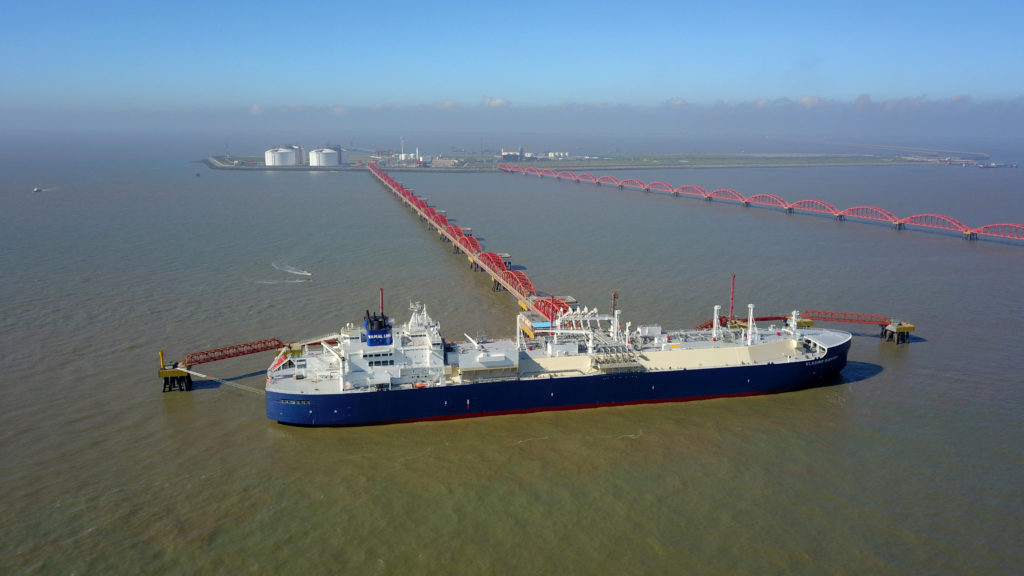LAUNCESTON, Australia – The rally in spot liquefied natural gas (LNG) prices in recent weeks has been framed as being led by robust demand in Asia and in Europe as the northern hemisphere deals with hotter-than-usual temperatures.

Although this certainly has a strong influence on prices, the narrative has downplayed issues surrounding supply of the super-chilled fuel, with declining volumes being shipped by major producers such as Australia, Qatar, the United States and Russia.
All four of these top exporters shipped less LNG in June than in May, and in some cases the June volumes were multi-month lows, according to data from commodity analysts Kpler.
The weekly spot price of LNG delivered to north Asia ended at $12.55 per million British thermal units (mmBtu), down from the six-month high of $14 the prior week.
However, futures contracts linked to the benchmark S&P Global Platts JKM index ended last week on a positive note, rising to $13 per mmBtu on July 9, up a second consecutive day but below its recent high of $13.23 on July 1.
On an annual basis, spot prices are massively higher, but this is largely a reflection of the collapse in demand for LNG in the middle of last year as economies across the globe were locked down as part of efforts to battle the coronavirus pandemic.
Perhaps a more useful comparison is to 2019, when JKM contracts were trading at $4.30 to $4.90 in July, or about a third of the current spot price.
JKM futures have been rallying strongly since late February, rising about 124% since the closing low so far this year of $5.80 per mmBtu on Feb. 25.
Part of the gain is likely a mindset among buyers of not wanting to be caught short of LNG for the summer peak after they were forced to scramble for supplies last winter, with prices surging and some cargoes reportedly changing hands at record highs above $30 per mmBtu.
However, the strong demand for LNG also seems to have run into supply constraints.
Australia, which vies with Qatar as the world’s top exporter of LNG, shipped out 5.80 million tonnes in June, according to Kpler, the lowest on a monthly basis since July 2020.
Qatar exported 6.38 million tonnes in June, down from 7.14 million in May and only just above April’s 6.33 million, which was the weakest month since November 2020.
The United States exported 5.43 million tonnes in June, the lowest volume since February and down from 6.5 million in May.
Russia shipped out 2.59 million tonnes in June, the lowest since February and down from May’s 2.80 million.
SUPPLY RECOVERING?
Maintenance at several LNG facilities curbed output at the top exporters, and it’s likely that as these processes are completed, supply will rise.
For example, Chevron said on June 15 it expects to restart in the “coming weeks” Train 3 at its 15.6 million tonnes per year Gorgon project in Western Australia.
Already, vessel-tracking data is showing exports are likely to rise in July, with Kpler estimating Australia’s shipments will surge 19.3% from June to 6.92 million tonnes this month.
Qatar’s exports are forecast at 6.84 million tonnes in July, up 7.2% from June’s figure, while the United States is forecast to ship some 5.32 million tonnes in July, a small dip from June.
Looking at a global figure, and world exports of LNG are forecast by Kpler to be 31.16 million tonnes in July, up from June’s 30.38 million.
To be sure, July’s figure is still well below exports of above 34 million tonnes, achieved in January and March of this year, but it is still a sign that supply is recovering.
Whether this will be enough to end the rally in spot LNG prices remains to be seen, but certainly additional supply will help bring balance back to the market.
The opinions expressed here are those of the author, a columnist for Reuters.
[contextly_sidebar id=”uMqrPkVp26qfptUmFpn4xNUjnZhOaPZP”]



